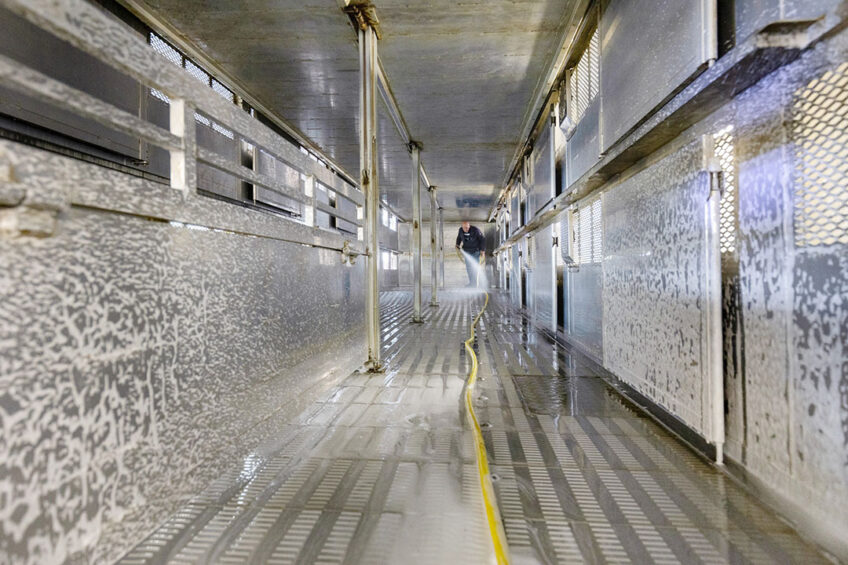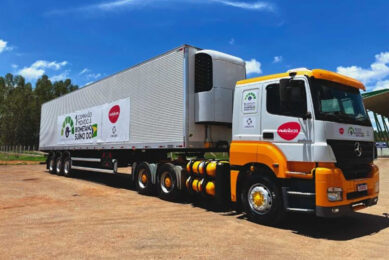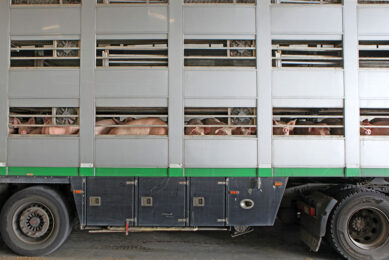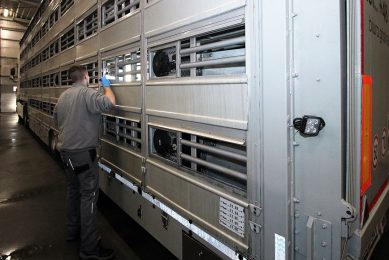How trailer disinfection can help prevent the spread of pig diseases

Research in Canada continues into the role of proper trailer disinfection in stopping the spread of many serious swine diseases.
There are many ways to disinfect a trailer after washing. There are chemical sprays, ultrasound, electricity (electric pulses at certain voltages), plasma, lasers, wet heat/steam and ‘baking’ swine transport trailers in an enclosed truck bay at relatively high temperatures for some period of time.
Research on requirements to destroy pathogens
A few years ago, scientists including Dr. Terrance Fonstad, a professor at the University of Saskatchewan, backed ground-breaking research. A paper by this team examined in lab conditions what time, length and temperature requirements were required to destroy pathogens using the baking method.
75°C for 15 minutes
The team used 10 swine health pathogens in the testing process. 5 of which were bacterial and 5 were viral. They also added fecal matter to test the effect of biological material on the time and temperatures required for pathogen destruction. The team found that all pathogens were destroyed at 75°C for 15 minutes. The presence of fecal matter resulted in increased time and temperature needed for pathogen inactivation.
Biofilm can help pathogens survive
However, this study did not evaluate how biofilm can help pathogens survive the disinfection process, explains Alejandro Recalde. He started a PhD degree in Fonstad’s lab. Biofilm is a matrix of microbial exudates and microbes. This matrix tenaciously adheres to biological or non-biological surfaces, dry or under water all or part of the time.
Other types of disinfection
“In my doctoral study, I have started with a review of existing biofilm research,” says Recalde. “It is clear that it needs more work to understand multispecies and complex interactions inside and outside a biofilm, as well as what triggers biofilm creation in different species of bacteria.”
In terms of pig diseases, it is important to note that microorganisms can become even more resistant to disinfection not only when inside a biofilm but when they emerge from a biofilm matrix.
“The relationships of several species and the variation inside and outside the biofilm can stimulate mutation and adaptation to survive hostile conditions,” notes Recalde. “There is evidence that some viruses that can survive in biofilm can also survive some disinfection process such as UV radiation.”
Pathogen survival
Recalde will be looking at the relationships that exist in biofilm on swine transport trailers and other surfaces. He will also look at how chemical, physical and biological changes in the biofilm affect pathogen survival.
The first stage of research will be the study of biofilms with 2 to 4 microbe species, both viruses and bacterial. He will characterise different ones on a chemical, physical and biological basis.
“Next, I will determine how various disinfection techniques affect the biofilms’ internal and external characteristics and whether interactions between microbes in the biofilm change,” says Recalde. “This will lead to further research on biofilm removal, but first we must better understand biofilms themselves.”










